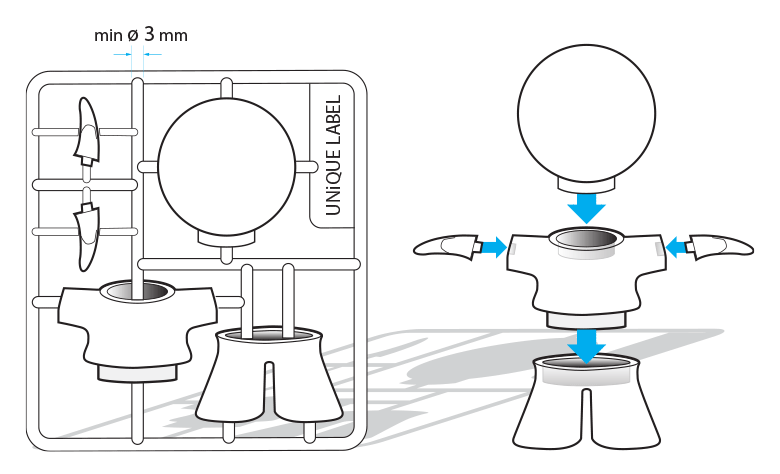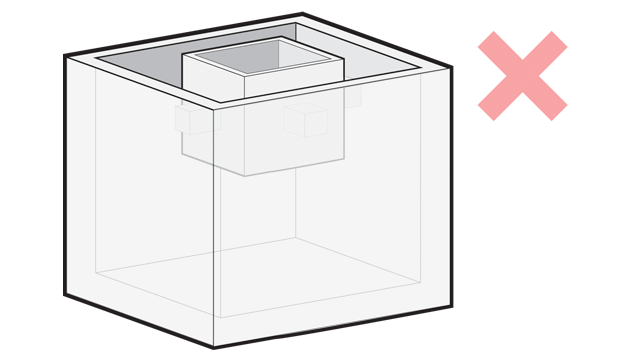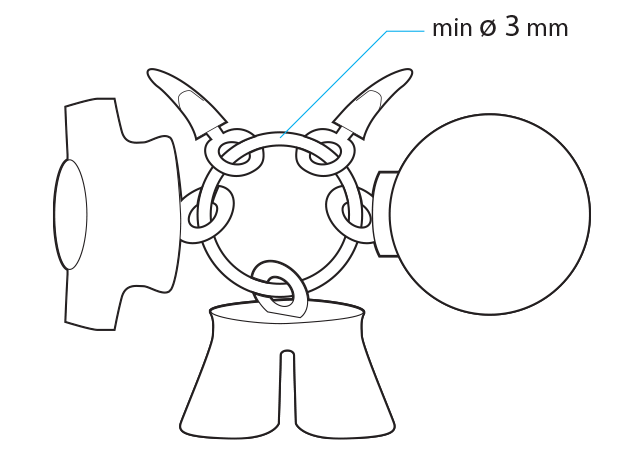Sprued Parts
Only applicable for polyamide (SLS), polyamide (MJF) and alumide, if the design rules are respected.

One way of making sure all the shells in your design stay together and can be processed as one part is to connect the different shells with sprues (support beams). It is important that the parts are well connected and that the sprues are strong enough. Use a minimum wall thickness of 3 mm as anything thinner will not be strong enough to support the different parts of your design. The heavier/bulkier your individual parts are, the thicker the sprues should be. If the connections between the parts are too weak, there is a risk that your parts might get lost. You can prevent bulkier shells by hollowing them out. Just don’t forget to provide several large drainage holes so that the powder on the inside can be removed – otherwise, your part will not become lighter. The part’s wall should be less than 5 mm thick. It’s also advisable to have 4 firm connections per shell. The larger the shells, the more difficult they are to connect properly. Parts that are not well connected might get lost during the production process. Please note that for Polyamide and Alumide, the sum of the dimensions of the imaginary box (X+Y+Z) around your design should be less than 350 mm.

For resins, the printing process uses a supporting structure. This means we cannot allow nested shells as the outer shell(s) will be filled with the supporting structure on the inside and therefore nearly impossible to remove.
Connected Parts
Only applicable for polyamide and alumide if the design rules are respected.

If your parts have holes through them, another way to keep them connected is by combining them on a ring. Putting your parts on a key-chain style loop ensures that we can process your designs as one part. However, when grouping your parts with this method, we can no longer orient them individually or define the correct space between them. So to avoid any problems during the build, prepare your design with a minimum of 1 mm spacing between each part. The minimum thickness of the connecting loop should be 3 mm. Make sure to limit the number of parts on the loop as too many items or large and heavy parts will have a greater chance of causing the loop to break. Designs, where the chance of breakage is too high, will not be allowed.